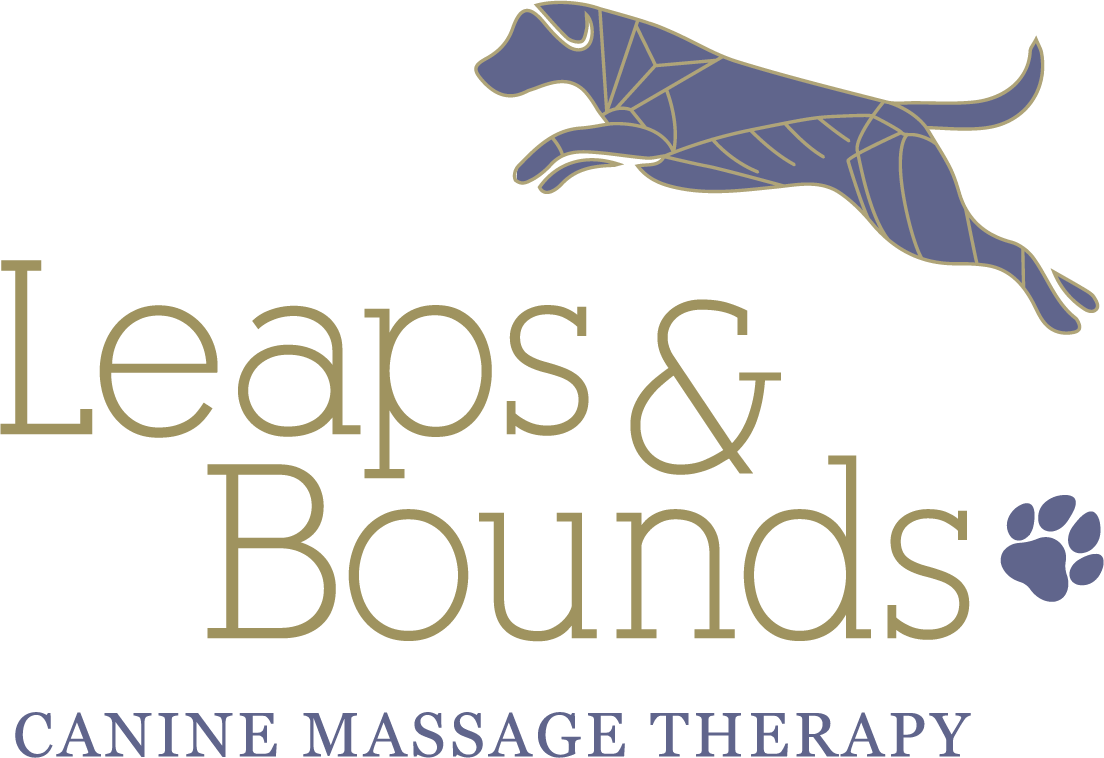Expand the sections below to find out more…
-
Clinical massage for dogs works by releasing tight and sore muscles, removing debilitating ‘knots’ or trigger points that cause referred pain and helps to rehabilitate injuries by breaking down restrictive scar tissue caused by daily activities that may be responsible for your dog’s discomfort.
It can help to resolve many day to day mobility issues whether they have come on suddenly or have been there for while. Getting your dog therapeutically treated by a Member of the Canine Massage Guild is a must for any dog owner concerned with their dog’s mobility and health. It can help give you answers to what you are seeing with your dog and importantly then do something about it with an hour of hands on therapy.
We aim to give your dog results in just 1-3 sessions.
It’s also a natural form of pain relief that can help to resolve soft tissue or muscular problems and helps support orthopaedic issues like Arthritis and Hip Dysplasia with tangible results.
For more information on specific conditions massage can help with click here.
-
Lameness/limping/stiffness
Slowing down/ ‘old before their time’
Reluctance to go on walks
Nervous/anxious/touch shy or aggressive around other dogs
Nibbling at areas of their body
Difficulty going up and down the stairs or getting on/off the sofa
Disinterested in life
Twitching/flinching of the skin
Gait/Posture irregularities eg: roaching/swayback/crabbing
Performance issues eg: Agility - knocking poles, Obedience - send away
Slow recovery from injury/operations eg: Cruciate ligament damage or surgery
Arthritis, Hip/Elbow Dysplasia
Crying/yelping in pain
Any of these 5 Principles of Pain: https://www.k9-massageguild.co.uk/wp-content/uploads/2019/05/Five-Principles-of-Pain.pdf
-
Better movement/reduced stiffness
Reduced or even fully resolved pain
Resolution or significant reduction of lameness/limping
The ability to go on longer walks/enjoying walks again
A ‘younger’ dog, who seems to have more energy
Improved character, mood, temperament or more affectionate
Reduction in reactivity
Reduction in anxiety by decreasing sympathetic levels (stress) and inducing a parasympathetic response (relaxation)
Able to return to activities of daily living e.g. going up/down the stairs
Able to return to activities of daily living e.g. up/down stairs, walks, getting onto the sofa, in/out of car
Got their ‘zest’ back for life
Coping better with their arthritis or post surgery recovery
A fully rehabilitated muscular injury
Improved working/agility performance eg: not knocking poles, good contacts and weave entry
Better posture eg: no more swayback or roaching
More fluid/effortless gait
A happier dog more willing to be examined, petted or groomed
A dog who is engaging confidently with their surroundings again
-
• Senior dogs who are ‘slowing down’
• Dogs with arthritis, hip dysplasia and other orthopaedic conditions
• Dogs with gait or posture irregularities (limping/lameness, finding it hard to get comfortable, reluctance to complete everyday activities walk, run, shake, up/down stairs, in/out of car)
• Dogs with acute muscular injuries or recovering from surgery
• Sporting, agility or working dogs to enhance their performance
• Dogs who struggle when being examined/handled/groomed (often due to pain or discomfort)
• Dogs with pain who are intolerant to non-steroidal anti-inflammatory drugs (NSAIDs) or with renal dysfunction
• Dogs that suffer with nerves, stress or anxiety.
-
Features are physiological changes that occur in the body after massage therapy. To find out more click here.

